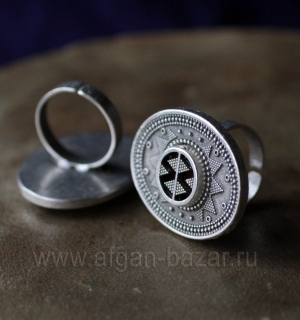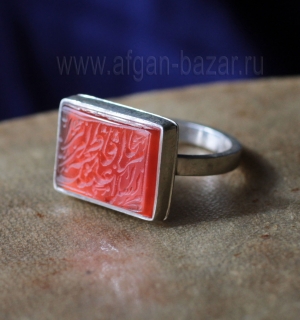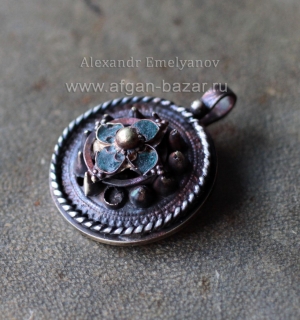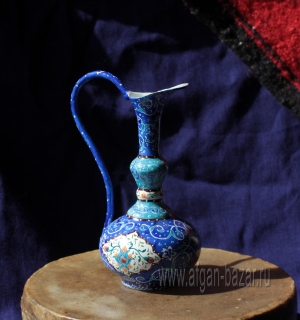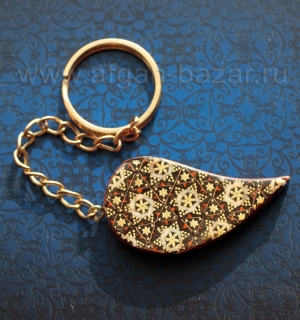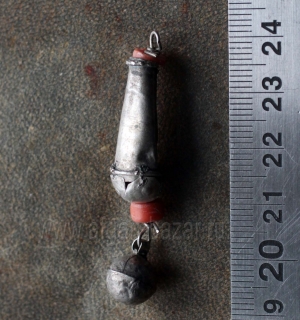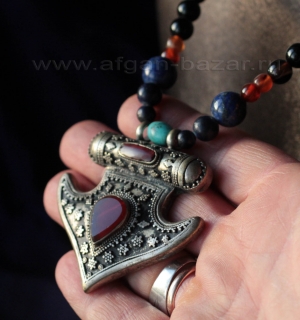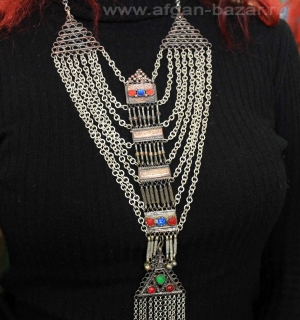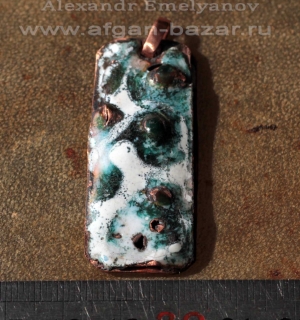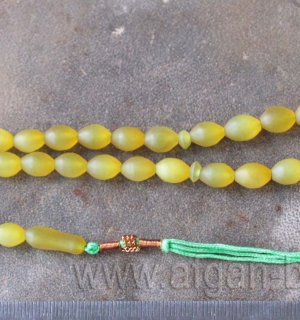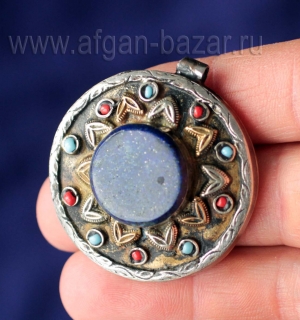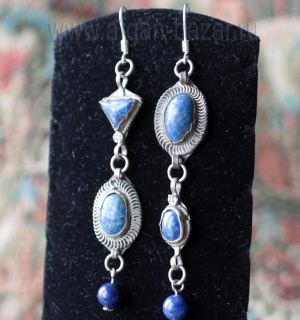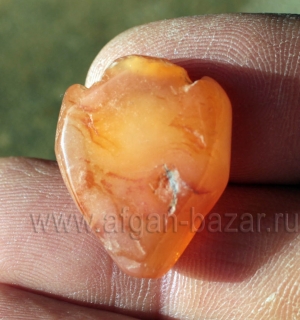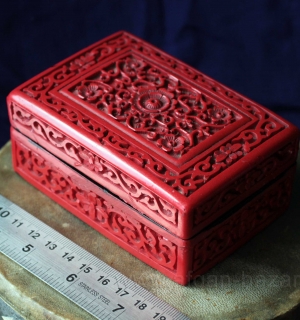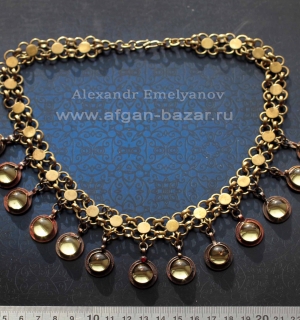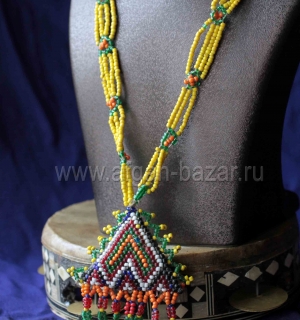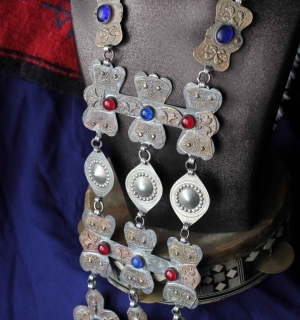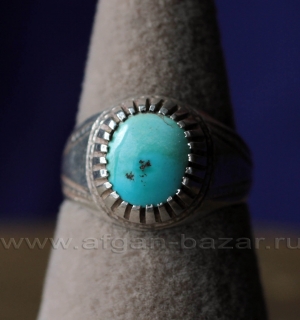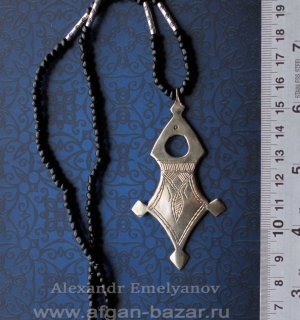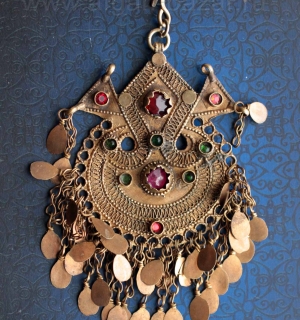Афганский племенной браслет. Афганистан или Пакистан, племена Кучи, 20-й век (Tribal Kuchi Jewelry) - снят с продажи для создания выставочного фонда
Афганский племенной браслет.
Афганистан или Пакистан, племена Кучи, 20-й век
ручная работа
Металл, литье, пайка, чеканка, цветное стекло
Расстояние между концами - 28 мм.
Внутренний размер - 62/71 мм (незамкнутый, слегка раздвигается)
Ширина - 85 мм
Вес - 150 г.
Приобретено в Стамбуле в 2018 г.
Одна из наиболее популярных форм пуштунских племенных украшений. Такие браслеты называются "баху" (пушт.) или "чури" (фарси), иногда достигают внушительных размеров, плотно облегают запястье и соединяются штифтом.
Принято считать, что форма таких браслетов произошла от боевых доспехов.
Технологически изготовляются либо из свернутого и прочеканенного листа металла, либо изготовляется сначала развертка из спаянных полосок металла, литых или прокатанных в вальцах для получения декора, после чего дополняется тиснеными из листа или коваными элементами декора.
Old Pakistani Tribal Balochi people Boho Kuchi Bracelet with Bohemian Glass.
Collectible
Pakistan, Balochi-Pashtoon Tribes. Vintage, middle of 20`th century.
Metal - "Alpaca" or "Gillet" (Tribal alloy of mixed silver-base metals), casting, soldering, inserts - Bohemian Glass
Lenght of the bracelet - 85 mm (3,3 ").
Inner diametr - 66 mm (2,5 ").
Opening gap - 28 mm ( 1,1 ").
Weight: 150 g. (5,3 Oz).
The bracelet has scuffs from long wearing. At one end, where the thicker strip is soldered, there are two cracks, one of them fixed with a steel wire hammered into the metal.
One of the most popular forms of Pashtun tribal jewelry. Such bracelets are called "Bahu" (push.) or "choori" (Farsi), sometimes reach impressive sizes, tightly fit the wrist and connect the pin.
It is believed that the shape of these bracelets came from combat armor.
Such kind of bracelet produced either from the chased and openwork cuted metal sheet and soldered strips of metal, or casing, and then is complemented by embossed from sheet or repousse elements.
Literature and analogues:
1. Karolina Krzywicka. Ethnic Jewellery of Afghanistan. From theAsia and Pacific Museum in Warsaw - Warzawa: 2012. - p. 62-63.
2. Wolf-Dieter Seiwert. Jewellery from the Orient. Treasures from the Bir Collection. / Wolf-Dieter Slwert – Stuttgart: Arnoldshe 2009 – p. 180.
3. Alfred Janata. Schmuck in Afganistan. / Janata A. - Graz: Akademische Druck – u. Verlagsanstalt, 1981. - s. 113.





